Site menu:

March 2019 Newsletter
Highlights - Mar 2018 to Feb 2019.
Colour Ring Report.
February Bird News.
Forthcoming Events.
Latest Newsletter.
Highlights - March 2018 to February 2019
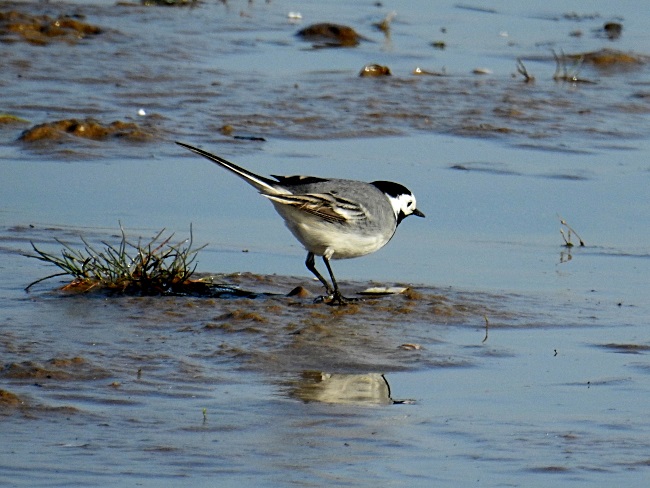
March 2019 marks the 21st birthday of 'Dee
Estuary Birding' and I do my usual review of the previous 12 months. A
busy year so this is just a few brief highlights.
The Beast from the East
Our
year started with the 'Beast from the East' with an exceptionally cold
spell for early March. It didn't deter the Wheatears, though, with the
first arriving on the early date of March 9th, and the rest of
the
spring migration was fairly normal if a bit quiet. Of note
was a
good White Wagtail passage in April at Hoylake with the highest single
count being over 300 on the shore. The cold weather did have an effect
on the waders
noticeably delaying their departure and we had a count of at least
30,000 Knot, high for March. Although there was no obvious die
off
these waders were obviously very hungry and we had the curious sight of
Dunlin, Ringed Plover, Knot and Redshank scrabbling for food on the
water's edge at West Kirby Marine Lake with a small flock of Scaup
there certainly part of a cold weather movement.

http://wildlifephotographic.blogspot.com/
Raptors
The biggest news of the year was the first successful breeding of Marsh Harriers on the estuary when a pair bred in Neston Reed Bed. Marsh Harriers were ever present with a max count of 16 at the winter roost site at Neston. Despite their illegal persecution on grouse moors we've had good numbers of Hen Harriers this past winter with up to eight, these include two 'grey' adult males over-wintering plus a third which turned up in February. According to the records I've received we've had 26 sightings of Red Kites over the past 12 months, this is easily a record high with the more usual number of annual records being in single figures. Nearly all these came in spring and summer and I did read somewhere that a pair was breeding on Halkyn Mountain just a few miles from the estuary, so may be they were those birds.
Rarities
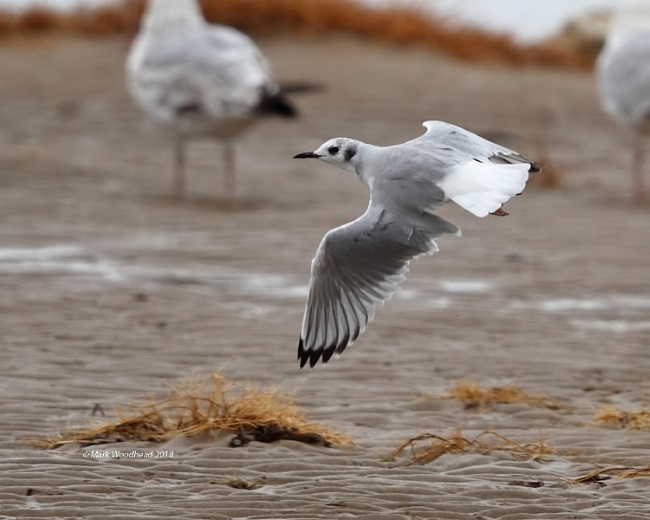
A particularly good year for rarities and I list here some of the more
exciting ones:
Iberian Chiffchaff - Thurstaston Hill. First identified by sound recording on May 1st, it was present through May and June.
Ring-necked Duck - Burton Mere Wetlands on May 10th. First record for the Dee Estuary.
Gull-billed Tern - Burton Mere Wetlands on May 23rd and 24th. Seventh record for the Dee Estuary.
Bonaparte's Gull - Hoylake and Hilbre from August 12th to 29th. Fifth record for the Dee Estuary. See Bonaparte's Gull article.
Bearded Tit - one at Burton Mere Wetlands on October 23rd with several more subsequently seen. Also present in Neston Reedbed, several remained at both locations through the winter. See Bearded Tit article.
Pied
Wheatear - Meols Promenade, November 5th to 9th. First
record for Dee Estuary and first for Cheshire & Wirral. See
Pied Wheatear article.

Best of the rest
It was an excellent breeding season at
Burton Mere Wetlands and on June 28th 50+
Avocet chicks, 45+ Redshank chicks, 100+ Lapwing chicks and a creche of
21 young Shelducks were counted.
The
Little Terns at Gronant had another record breaking season with 174
pairs, this despite a storm destroying a large number of nests in June.
A very late Swift (possibly a Pallid Swift) on December 1st was
followed by a very early Sand Martin, Wheatear and White Wagtail in
February.
14 Eider over-wintered off Hilbre, the highest number since 17 in
1957/58.
Although
scarce in the early winter, after the New Year Short-eared Owls started
to show really well at Parkgate with up to six being seen close to
the promenade most days, the spring tide on February 20th flushed at
least seven from the usual roost just south of Cottage Lane.
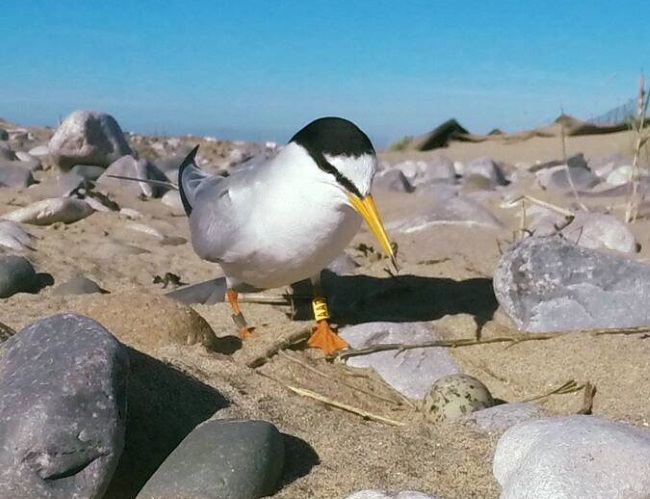
Richard Smith.
Top of Page
Colour Ring Report
Knots
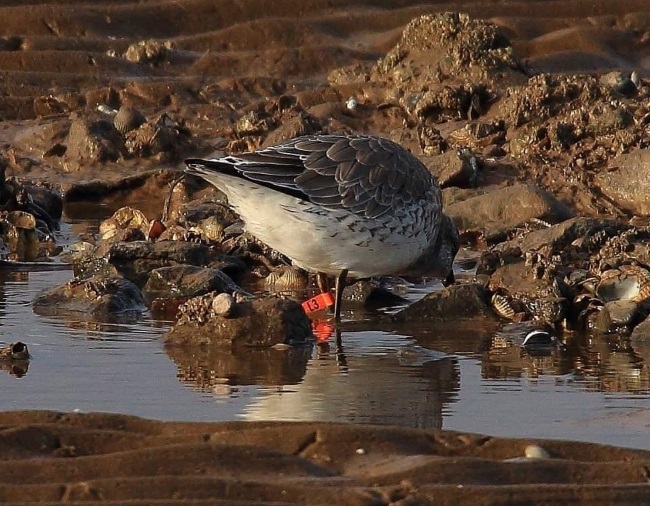
Although there have been fewer Knot on the estuary this winter we have still managed to log 664 sightings of 340 colour ringed/flagged birds, an impressive total by any measure. I hope to go into more details in a future newsletter but here is the history of the bird photographed above.
OflagP
(Orange flag over pale blue) - L3.
Ringed by the Alt Estuary (near Formby Point) on September 22nd 2017.
Recorded at Formby Point in October 2017.
Recorded at Thurstaston from December 2017 to February 2018 when it was
also at West Kirby.
August and September 2018 saw it at Southport and it was again at
Thurstaston from October to November 2018 before it was spotted at
Hoylake in January 2019.
Recorded at West Kirby by the Marine Lake on February 11th 2019.
Oystercatchers
The Dee estuary is the third most important wintering site for Oystercatchers in the UK, and colour ringing is now telling us where these birds breed. The three below breed in the Netherlands, north-east Scotland and Iceland.
m/W(L)-G/B(Y)
Ringed in Grijpskerke (south west Netherlands) on June
30th 2013.
Recorded in SW Netherlands 11 times between March 2016 and April 2018,
always between March and June.
Recorded at Thurstaston on February 2nd 2019.
OW(AL)
- Left
Tarsus: Orange ring over White with AL engraved on it.
Ringed at Glen Clova, Angus, June 3rd 2016.
Recorded on Flint Marsh in February 2019.
NG-W(PA)
Ringed in east Iceland on May 20th 2018 as incubating adult.
Recorded at Thurstaston in September 2018 and again on February 1st
2019.
Ringed Plovers
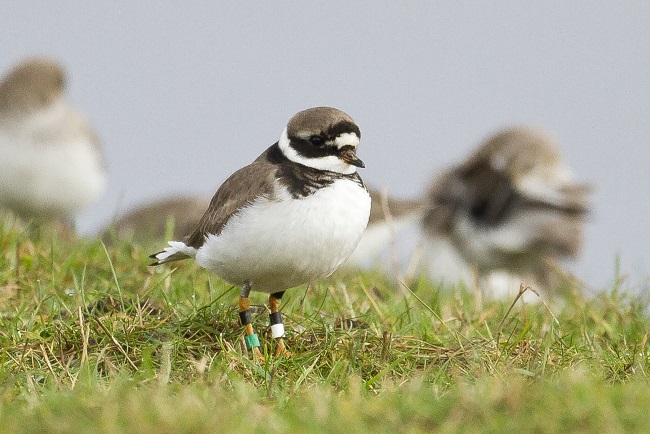
We don't get many Ringed Plovers over-wintering on the Dee
Estuary so it was a surprise to see one with colour rings and
even more of a surprise when we realised it was one we'd seen
back in September 2018. This is only our fourth colour-ringed Ringed
Plover.
N/NW-m/NG
- ringed as a chick.
Ringed in the German Waddensee at Beltringharder Koog, on
June 15th 2018.
Recorded at Thurstaston on September 26th 2018.
Recorded at Greenfield on January 23rd and 24th 2019.
Dunlins

VX1 on white ring.
Ringed near Gadansk, Poland, on September 25th 2015.
Recorded at West Kirby Marine Lake on January 14th 2108.
Recorded at Greenfield on January 23rd 2019.
O-Y(26W)
- (Orange ring (left) - Yellow ring engraved with 26W (right)).
Ringed at Ynyslas, Wales, on August 29th 2018.
Recorded at West Kirby on January 5th 2019.
Common Gull
Metal Ringed Common Gull (ring read from photographs)Ringed at Sandholmane (near Bergen), Norway, in July 2013.
Recorded at 'The Dips', New Brighton, on February 5th 2019.
Herring Gull
T3YB (yellow on black ring)Ringed Calf of Man, Isle of Man, on June 23rd 2014.
Recorded Calf of Man, Isle of Man, on July 9th 2017.
Recorded Hoylake Shore on February 8th, 2019.
Mediterranean Gull
PTU8 (on red ring)Ringed near Lodz, Poland, on June 10th 2015.
Recorded Cardiff Bay in March 2016.
Recorded in Eidersperrwerk, Germany, in May 2016.
Recorded at Burton Mere Wetlands on March 3rd 2017.
Recorded at Connah's Quay Nature Reserve on February 24th 2019.
Colour-ringed birds were recorded by Richard Smith, Steve Hinde, David Winnard, Tim Kinch, Ian Beggs, Steve Williams, Alan Hitchmough, Derek Bates, Jackie Binks and Elliot Montieth.
Richard Smith.
Top of PageFebruary Bird News
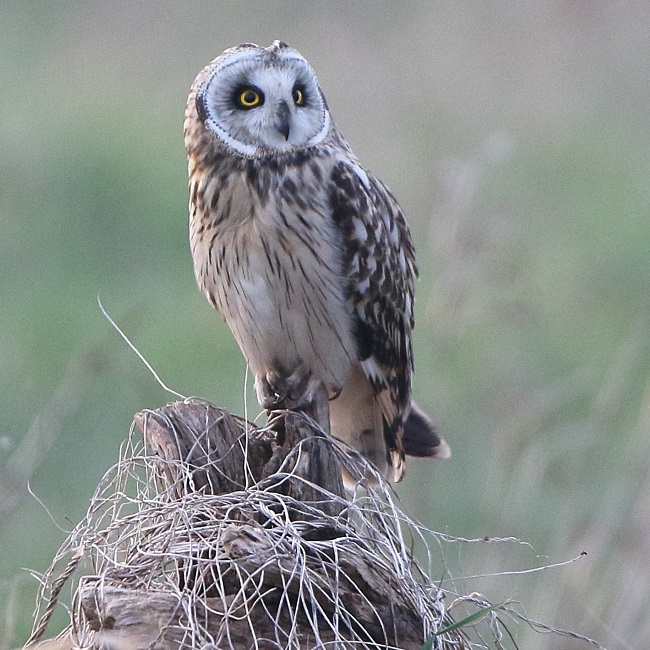

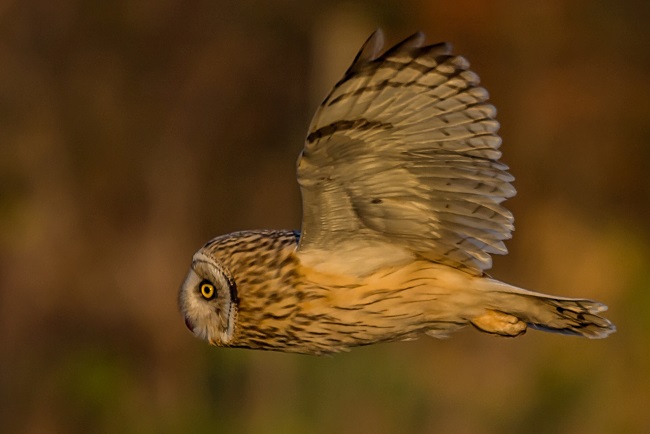
Is there anywhere in the country as good as Parkgate and Neston for getting great views of Short-eared Owls, Hen Harriers and Marsh Harriers? And to see them on a lovely sunny day with no wind with the tide covering the marsh, as on the 21st, was sheer luxury. I think the highest single count this month of Short-eared Owls was seven, off Heswall Golf Course on the 20th, but total numbers must be well into double figures. Marsh Harriers are also probably in double figures but have been difficult to count as they appear to be using at least three different roost sites - at Neston Reedbed, Burton Mere Wetlands and off Burton Point. They are nearly all second calendar year birds.
Apart from fantastic views of the raptors the big story of the month was the warm weather, it was more like early May than late February! The southerly winds brought in our earliest ever Sand Martin and White Wagtail, with a Wheatear on the 27th just two days later than one recorded on Hilbre in 1985. There was an early and noticeable passage of Stonechats with seven at Leasowe Lighthouse on the 26th the highest count.
The first Avocet arrived back at Burton Mere Wetlands on the 14th and rapidly built up to at least 50 by the month-end, a record high for February. Bearded Tits continue to be seen at BMW with five on the 1st. Will they stay to breed? At least one Bittern continues to show at Parkgate and was heard booming on the 28th.
We don't really know how many Pink-footed Geese are on the estuary but suspect that with several thousand feeding in fields along the Dee flood plain together with those spending the day on the estuary and nearby fields total numbers could be as high as 15,000. A single Bean Goose was spotted in a flock of 'Pinkfeet' at Burton,it is not known whether it was a Taiga or Tundra Bean Goose. Before the warm weather arrived we had large numbers of Lapwings including a count of at least 4,000 on the 7th.
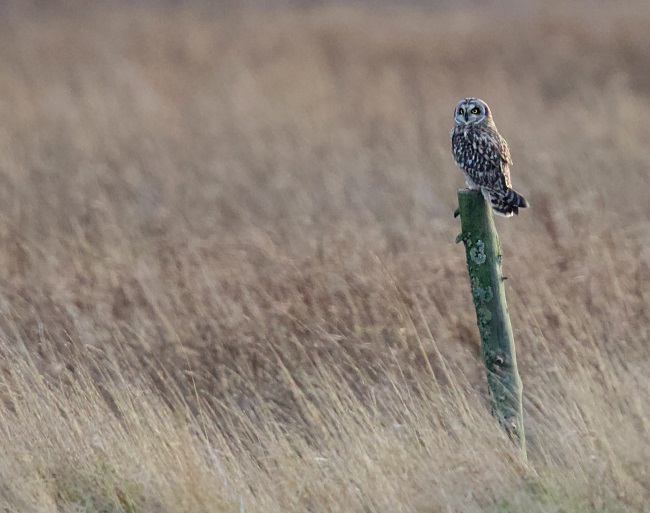
Top of Page
What to expect in March
 and,
if it's a first,
I'll put it in the 2019 table.
and,
if it's a first,
I'll put it in the 2019 table.| Species | 2018 | Location | 2017 | 2016 |
|---|---|---|---|---|
| Wheatear | 9th March | Leasowe Lighthouse |
11th March | 23rd March |
| White Wagtail | 14th March | Hilbre | 4th March | 15th March |
| Sand Martin | 15th March | West Kirby | 11th March | 16th March |
| Willow Warbler | 27th March | Greasby | 17th March | 29th March |
| Swallow | 29th March | West Kirby | 14th March | 24th March |
| House Martin | 6th April | Burton | 27th March | 7th April |
| Whitethroat | 7th April |
Leasowe Lighthouse |
17th April | 13th April |
| Swift | 22nd April | Burton | 19th April | 22nd April |
| Cuckoo | 23rd April |
Decca Pools | 24th April | 21st April |
Out to sea we can expect our first Sandwich Tern of the year and the usual passage of Little Gulls flying past Hilbre and along north Wirral towards Crosby where they then fly overland on their way to breed in the Baltic. March often sees huge numbers of Common Scoters out in Liverpool Bay as they pass through on their way north, look out for rarer scoters such as Velvet and Surf.
Avocet numbers will build up at Burton Mere Wetlands through the month, usually reaching three figures by the month-end. Out on the marshes Pink-footed Geese should reach over 10,000 and it is likely some of these birds include ones stopping over on their way from Norfolk slowly making their way back to Iceland to breed.
Look out for Stonechats moving through, there is often a noticeable movement in March, particularly at Point of Ayr, Hilbre and north Wirral. Siskin is another species likely to be passing through and often seen on garden feeders.
March 21st to 24th sees some more big spring high tides and we should see Short-eared Owls and both Hen and Marsh Harriers with the usual wildfowl and waders.
Forthcoming Events
March Highest Spring Tides (Liverpool)
Also see Tides page.
21st March, 11.16hrs (GMT),
10.0m.
22nd March, 12.00hrs (GMT), 10.1m.
23rd March, 12.42hrs (GMT), 10.1m.
24th March, 13.22hrs (GMT), 9.8m.
Forthcoming Events
Organised by the Wirral Ranger Service , Flintshire Countryside Service and the RSPB (Dee Estuary): All these events and walks have bird interest, even those not advertised specifically for birdwatching. No need to book for these events unless specified - please check below.
Sunday 10th March - Raptorwatch at Parkgate (RSPB).
1pm-dusk, Price: Free.
Join us for a chance to see up to seven different birds of prey including peregrine and merlin, plus two types of owl that all make their home on the RSPB Dee Estuary nature reserve. With its panoramic views of the saltmarsh, Parkgate is one of the best places to watch for these birds hunting.
Stick around until dusk for a chance to see the graceful and endangered hen harriers flying into roost for the night on the marsh close to the Old Baths car park, and maybe a ghostly barn owl emerging to hunt. No booking required, come along any time between 1pm and sunset.
Dress appropriately for the weather and don't forget your binoculars! Public toilets and various pubs and cafes are situated close by along Parkgate promenade.
Thursday 21st March, Friday 22nd March and Saturday 23rd March.
High Tide Birdwatch at Parkgate (RSPB).
10.30am-2.30pm.
High tide times: Thursday 21 at 11.16am; Friday 22 at 12noon; Saturday 23 at 12.42pm.
Price: Free.
In celebration of the RSPB Dee Estuary reserve's 40th anniversary, join us at Parkgate Old Baths for the awe-inspiring spectacle of a high tide flooding the vast saltmarsh, potentially reaching the old sea wall. The marsh at Parkgate is one of the best wetland habitats in the northwest, and when flooded by an incoming tide, the wildlife which lives here is pushed closer, with chance of seeing the great range of ducks, geese, wading birds and egrets in big numbers as they are driven upstream by the rising tide.
A range of birds of prey take advantage of mice and voles flushed from the grasses; hen and marsh harriers, peregrines and merlins all spend the winter months on the estuary and this is one of the best places to watch them, plus short-eared owls if we're really lucky. So why not venture out to try witness all the drama. Low pressure and a westerly wind will help push the tide and wildlife in close.
There is free public parking at the Old Baths car park (CH64 6RN) at the north end of The Parade, and the Wirral Country Park car park on Station Road (CH64 6QJ). There are public toilets at Mostyn Square in the middle of The Parade, and a number of pubs and cafes.